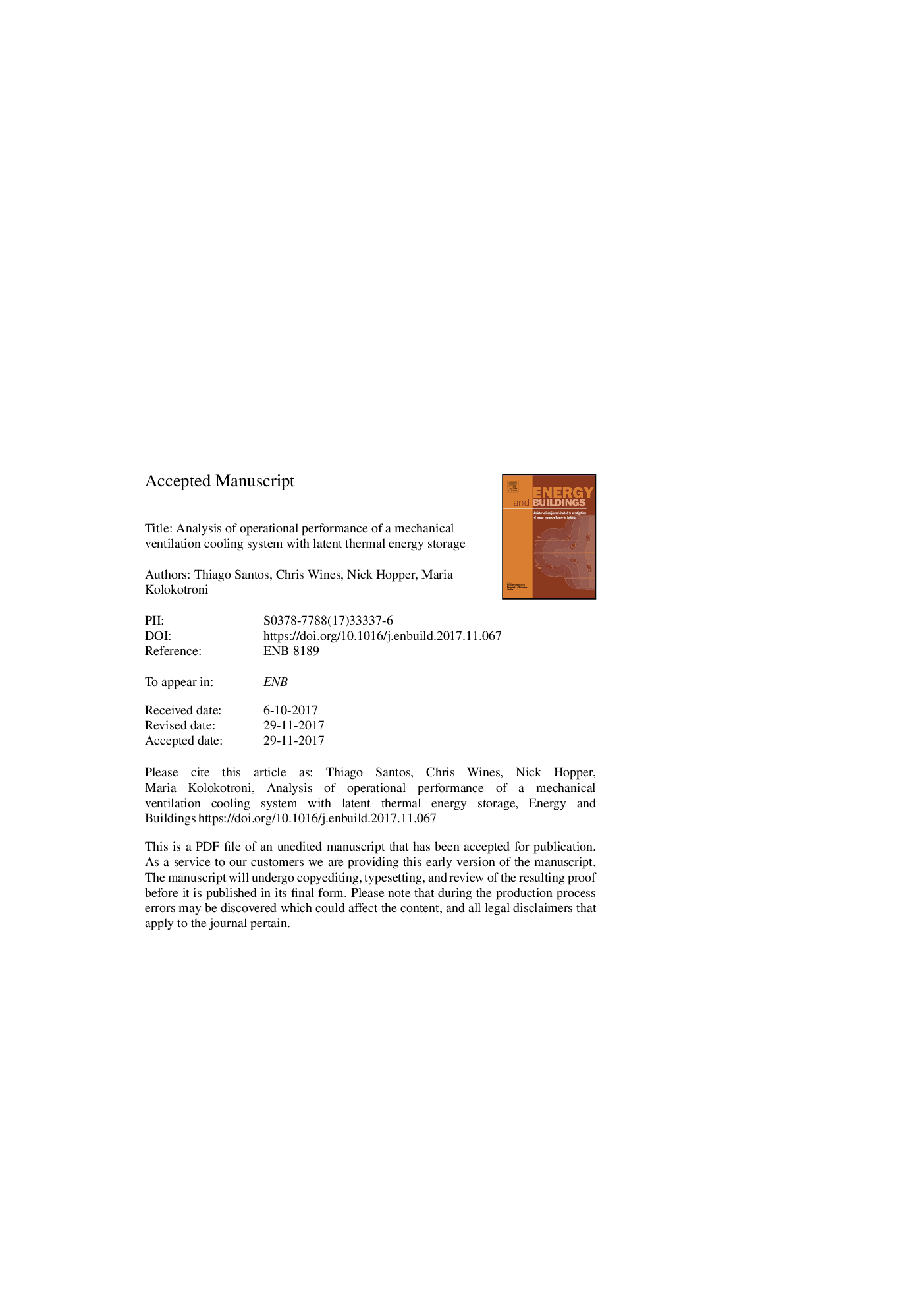| Article ID | Journal | Published Year | Pages | File Type |
|---|---|---|---|---|
| 6729345 | Energy and Buildings | 2018 | 31 Pages |
Abstract
Latent Thermal Energy Storage (LTES) is a promising solution to reduce cooling energy consumption in buildings. Laboratory and computational studies have demonstrated its capabilities while commercial passive and active systems are available. This paper presents data and analysis of the performance of an active LTES ventilation system in two case-studies, a seminar room and an open plan office in the UK. Analysis using environmental data from the system's control as well as additional space monitoring indicates that (a) internal temperature is maintained within adaptive thermal comfort limits, (b) acceptable Indoor Air Quality is also maintained (using metabolic CO2 as indicator) and (c) energy costs are low compared to air-conditioned buildings. Thermal and CFD computational studies indicate that purging and charging duration and associated set-points for room temperature as well as air flow rate are the important parameters for optimised performance for a given LTES design. These parameters should be optimised according to the use of the space and prevailing external conditions to maintain internal thermal comfort within upper (usually in the afternoon) and lower (usually in the morning) limits.
Related Topics
Physical Sciences and Engineering
Energy
Renewable Energy, Sustainability and the Environment
Authors
Thiago Santos, Chris Wines, Nick Hopper, Maria Kolokotroni,
